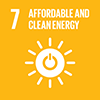Description/achievement of initiative
The Nauru Energy Vision has been taken from the energy sector goals of the National Sustainable Development Strategy 2005-2025 (NSDS, revised 2009):“Provide a reliable, affordable, secure and sustainable energy supply to meet the socio-economic development needs of Nauru”.
Some examples of the achievements in the energy sector since the establishment of the NSDS in 2005 are the following:
- A 40-kWp grid – connected PV was installed on the foots of Nauru College. Since its installation, in 2008, it has been generating an montly average of 4,500 kWh which translates into a fuel saving of 1.325 liter per month. This has also resulted in a 0.05% of renewable energy into the overall energy mix.
-Establishment of various PaMs for the implementation of the energy goals in the NSDS. Such PaMs are as follows:
-Energy roadmap – incorporate an Action Plan, Nauru Utilities Sector
-A Strategy for Reform, National Energy Policy Framework, Nauru Economic Infrastructure Strategic Investment Plan and the Nauru Utilities Corporate Strategy.
The purpose of the sector goals of the NSDS, including the energy goal, is to enable the achievement of Nauru’s overall vision and the long/term goals reflected in the NSDS.
As other Small Island Developing States (SIDS), Nauru is heavily dependent on fossil fuel to meet its energy demand. The average fuel demand is 10 million liters per year and the previous national budget for the 2013 – 2014 fiscal year recorded the allocation of $25 million only for the purchase of imported petroleum. This reflected 26% of Nauru’s total expenditure during that fiscal year and more than 70 % of the imported petroleum was used for power generation. This significantly illustrates Nauru’s vulnerability to the global fuel price increase and global supply shortages which all puts additional pressure to the energy sector.
Furthermore, other factors, including the increasing population, extreme weather events and sea level rise as consequences of climate change, will further threaten energy related infrastructures, thus also contributing to the pressure on the energy sector. The current power system comprises a power station dating back to the early 1950’s with diesel generators ranging in age between 10 and 37 years old and an antiquate distribution system . These infrastructures urgently need overhaul and replacement. On a more positive note, Nauru ranked high in some indicators such as electrification (100% compared to a SIS average of 68%) and affordable tariffs, however, it had low scores for renewable energy share in the overall energy mix at only 0.05% and an estimated 73 days of fuel supply security.
Implementation methodologies
Nauru has established various policies and measures (PaMs) to ensure sustainable energy for the country. Sustainable development approaches, including the Nauru Energy Roadmap and National Energy Policy Framework (NEPF) were designed in collaboration with the Government development partners and have set specific targets:
24/7 grid electricity supply with minimal interruptions,
50% of grid electricity supplied from renewable energy sources by 2020 and
30% improvement in energy efficiency in the residential, commercial and government sectors by 2020.
This Energy Roadmap will be the Government’s official document serving as an implementation plan for the NEPF, NSDS and other PaMs.
If this context, PaMs are effectively implemented in close collaboration with the Government's development partners to provide the Means of Implementation and then the expected outcomes of this vision. With reference to the energy goals, the Means of Implementation are the following:
i. A reliable, affordable and safe power supply and services
ii. A reliable and safe supply of fossil fuels
iii. Universal Access to reliable and affordable energy services
iv. An efficient supply and use of energy
v. A significant contribution from renewable energy towards electricity supply
vi. Financial sustainability of the energy sector.
Arrangements for Capacity-Building and Technology Transfer
Coordination mechanisms/governance structure
Partner(s)
Government of Nauru


 2020
2020
 2020
2020